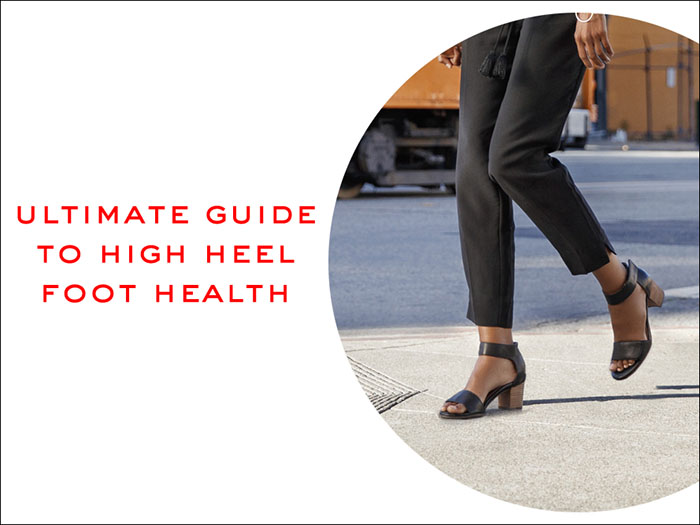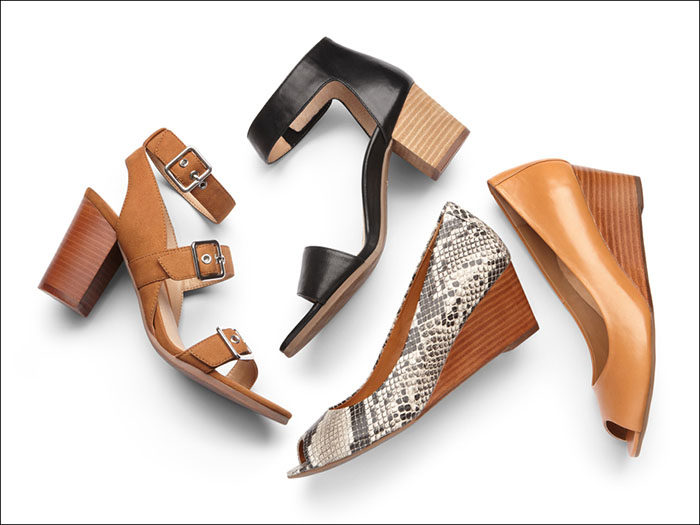 Presents
Presents
 Presents
Presents
As a practicing podiatrist in New York City, Dr. Jackie Sutera sees her fair share of women whose feet are suffering from the effects of wearing sky-high heels. Here, she offers her tips for keeping your feet looking and feeling their best before, during and after wearing high heels.
High heels are a fixed pillar in fashion. Whether worn for work, a special event or to just feel a few inches taller, women have been wearing high heels for centuries. But despite this shoe style's overwhelming popularity, many women are still uninformed about high heel health. My patients often ask me if high heels can cause damage, and the answer is: yes. High heels can have lasting effects on your feet, ankles, legs and spine. However, there are easy-to-remember tips that can help relieve pain and lessen potential future damage. Here are my top recommendations for achieving and maintaining the best high heel health.

BEFORE Wearing Heels:
- Look for high heels that have a chunkier heel, like a wedge or a platform. These styles are more stable than their stiletto counterparts, because you can distribute body weight and pressure across a greater surface area.
- Do not exceed a two-inch height with your high heels, as recommended by the American Podiatric Medical Association. Damage occurs with increased heel heights due to weight shifting forward to the ball of the foot.
- Avoid wearing the same heel heights and the same pair of shoes or types of shoes every day, all day.
WHILE Wearing Heels:
- Rotate your ankles while sitting. This can give your ankles a nice stretch.
- Sit as much as possible. When you're wearing high heels, your limbs are working hard. Sitting will give your feet and legs some much-needed rest.
- Take a break. Go to a private area, slide your heels off and flex your toes for a few minutes.
- Bring alternative shoes for the end of the day or the event you're attending. This can help prevent added pain and relieve pressure so you don't miss a thing!
- Do not exceed three to four hours of high heel wear, and do not exceed that for longer periods of standing and walking.
AFTER Wearing Heels:
- Do calf stretches. Beneficial for your health, these stretches can also help reduce knee and hip pain.
- Take Epsom salt foot baths. Not only is this good for your feet, but it will feel great too.
- Massage the arches and balls of your feet and calves. High heels put an immense amount of pressure on the balls of your feet and require the work of your arches and calves.
- Ice your feet and legs. A cold application can reduce swelling.
- Wear commuter shoes to and from work/events, and remember to alternate shoes the next day.
Looking for a heel that doesn't hurt? Vionic offers a variety of heels and wedges with arch support.


About Vionic Shoes
Feet were designed to walk on soft, natural elements like soil and sand, not the hard, flat man-made surfaces that make up so much of our modern world. Vionic shoes hug your arches like a natural footprint, giving you all-day support and promoting a more active lifestyle. Many Vionic shoes, sandals and orthotic shoe inserts have earned the APMA Seal of Acceptance, which certifies they are beneficial in promoting foot health. For additional information about Vionic, please visit VionicShoes.com.
